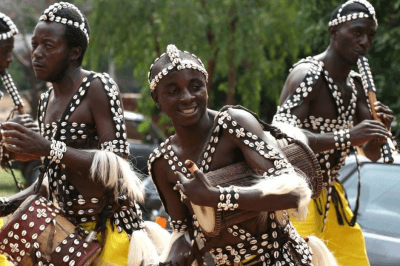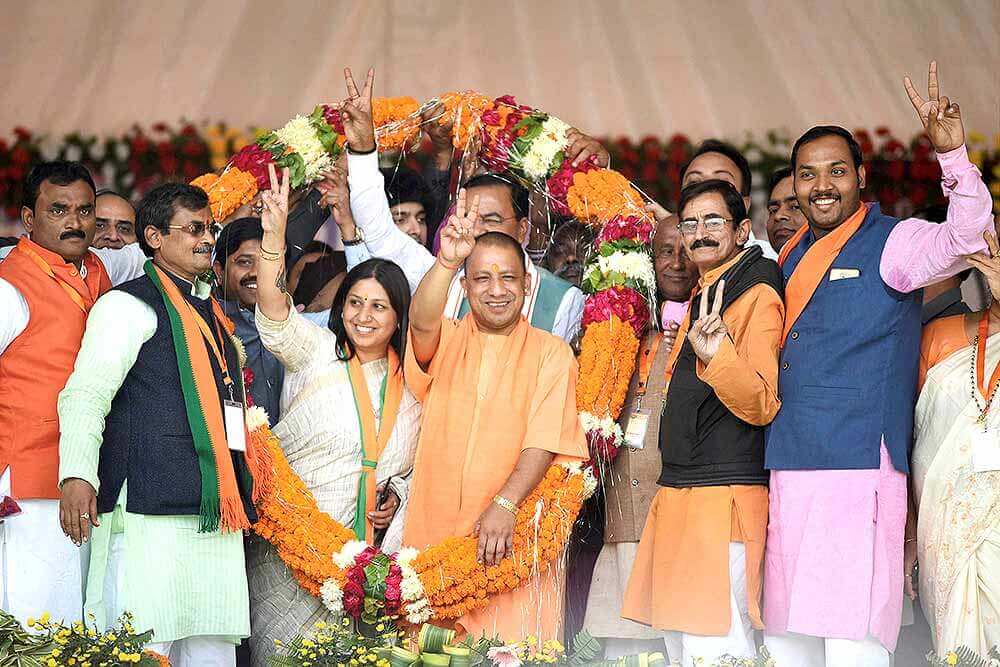“Foreign dignitaries visiting the country used to be gifted replicas of the Taj Mahal and other minarets which did not reflect Indian culture,” said Uttar Pradesh Chief Minister Yogi Adityanath back in 2017.
This attempted erasure of history is now commonplace under the Hindu-nationalist BJP and is driven by Islamophobic motives which seek to un-Indianize the Mughals.
The Mughals and British alike came to India as foreign invaders. However, unlike the British, the Mughals never left. Instead, they introduced elements of their culture and traditions while also ensuring their assimilation and integration into the country, as evidenced by the fact that after Akbar, all Mughal rulers were born in India, and many had Rajput mothers.
However, if the benchmark for being Indian is not having foreign heritage, are any of us Indian at all?
It is estimated that the first Indians were the hunter-gathering Out of Africa (OoA) migrants–now labelled the Ancient Ancestral South Indians (AASI)–who arrived in southern India around 65,000 years ago.
It is argued that around 4000 BCE, there was a large migration of farmers from the Elam region in present-day southwestern Iran into India.
Archaeologists postulate that these farmers began to mix with the AASI, leading to the creation of what is called the Harappan or Indus Valley Civilization (IVC), which thrived between 3300 and 1300 BCE.
It was only around 2000 BCE that the Indo-European steppe pastoralists—“formed from a mixture of ancient European hunter-gatherers, ancient Siberians, and farmers from northwestern Iran”—arrived.
These pastoralists, otherwise known as the Aryans, forced much of the Indus Valley Civilization further south to mix with the AASI to create Ancestral South Indians (ASI). Those from the IVC who did not migrate south mixed with the Aryans to form the Ancestral North Indians (ANI).
What is it then that makes the Mughals any less Indian?
One might counter that migration cannot be equated with invasion and thus the characterization of the Mughals as foreigners is justified.
For example, there are numerous instances of forced religious conversions and jizya–a yearly taxation–levied on non-Muslims under Mughal rule.
That being said, while there is limited evidence to suggest a command-and-conquer style of colonialism by ancient Indian civilizations, it can at the very least be said that India was founded on the bedrock of racial and cultural assimilation.
For instance, the ASI possessed a whopping 75% AASI DNA, and just 25% Elamese Iranian farmer DNA; yet, modern-day South Indians bear little phenotypical and cultural similarities with the Andamanese–who “may be the closest existing group to the AASI”–but quite a few with Iranians.
The disappearance of the AASI African phenotype in mainland India may point to a form of racial conquest, evidenced by the fact that only the isolated Andamanese and Sentinelese indigenous populations retain phenotypical and cultural elements of the original AASI.

Similarly, the Indo-Aryans are believed to have introduced the Vedic religion–an ancestor of modern Hinduism–and the Indo-Aryan languages–Sanskrit and its modern descendants like Hindi, Urdu, Punjabi, Nepali, Marathi, and Bengali.
However, various Aryan migration theories posit that the ‘Vedicization’ and ‘Sansrkitization’ of India was propelled by the Indo-European steppe pastoralists’ forced assimilation of the IVC. Thus, the IVC ceded land and was pushed further south, and the Indo-Aryan Sanskrit language and Vedic religion eventually became the predominant language and theology of Ancient India.
Likewise, for better or for worse, the Mughals now form a crucial part of India’s rich and diverse history. The morality of their rule can be questioned and critiqued, but this does not constitute or justify an erasure from Indian history.
Moreover, their origins are irrelevant, as we are all descendants of migrant populations. If the Mughals are foreigners, then by that definition, we all are. If the Taj Mahal is not Indian, then neither are Hindi and Hinduism, as they are descendants of Sanskrit and the Vedic religion, which were introduced by Indo-European steppe pastoralists from Eurasia.
Defining what it means to be Indian by such rigid and inflexible parameters is merely gatekeeping and is the product of jingoistic zealotry. By this measure, the only true indigenous populations to India are likely the Andamanese and Sentinelese populations.
Attempts to rewrite Indian history by erasing the Mughal legacy are rising exponentially under the BJP. Allahabad is now Prayagraj. Faizabad is now Ayodhya. Aurangazeb Road in New Delhi is now Dr. APJ Abdul Kalam Road. Akbar Fort is now Ajmer Museum. Mughalsarai Railway Station is now Deen Dayal Upadhyay Junction. There are calls to boycott Kaun Banega Crorepati after one of the questions labelled Aurangazeb as samrat. State governments in Gujarat, Maharashtra and Rajasthan have removed entire chapters from history textbooks on the Mughal Empire despite their three-century rule. The list goes on and on.
Ultimately, to narrow the definition of what it means to be Indian stands in opposition to our long, diverse and storied history. The wide-spanning and infinite branches of Indian history and culture are held together by the far-reaching roots of our ancestry, which stretch across the globe from Africa, to Europe, to the Middle-East.

